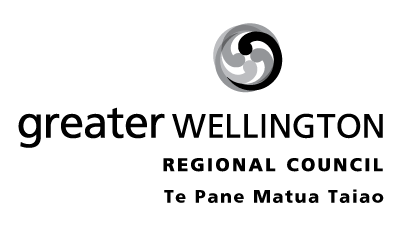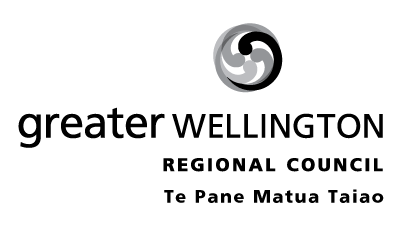 PT Funding Review 2016 – Scope paper
PT Funding Review 2016 – Scope paper
1 December 2016
Prepared by Helen Chapman
PT Funding review scope
PAPER
Page 1 of 13
Version control
Date
Person
Description
25 November 2016
Helen Chapman
• First draft
1 December 2016
Helen Chapman
• Refinements to draft
12 December
Tass Larsen
• Revision
PT Funding review scope paper
Page 2 of 13
Contents
1 Introduction ...............................................................................................................................................4
2 Problem Definition ....................................................................................................................................4
2.1
The transport rating model ..............................................................................................................4
2.2
Issues with the current model..........................................................................................................5
2.3
The public transport transformation project ....................................................................................6
3 Objectives ..................................................................................................................................................7
4 Scope .........................................................................................................................................................7
4.1
Scope of the PT Funding Review ...................................................................................................7
4.2
Fit with existing Revenue and Finance Policy ................................................................................7
4.3
Regional land transport plan ...........................................................................................................8
4.4
Regional public transport plan ........................................................................................................9
5 Methodology .............................................................................................................................................9
6 Resources ................................................................................................................................................10
6.1
Budget ...........................................................................................................................................10
6.2
People ............................................................................................................................................10
Appendix one: Indicative timeline and task breakdown ..............................................................................11
PT Funding review scope paper
Page 3 of 13
1 Introduction
This report sets out the problem definition, objectives and scope for the review of the
public transport rate funding. About 25% of the operational cost of providing public
transport in the Wellington Region is raised through rates. Fare revenue makes up
approximately 55-60% (reflecting user benefits) and the remainder is funded from road
users by central government through the National Land Transport Programme (NLTP).
Public transport funding is used for:
• Metlink public transport network funding
• rail operations and asset management
• bus and ferry operations and asset management
• Metlink customer services and information.
The need for a review has been triggered by two key factors:
• Concern from council that the current rating approach for transport is difficult to
understand and therefore hard to explain/defend
• The public transport transformation programme is making a number of changes,
including new contracts, a new network and a change to integrated ticketing and
fares.
This paper sets out the problem definition, identifying why we are undertaking a review
now. The objectives of the review, the scope of the review key interdependencies and a
high level methodology.
This review is an input into the wider review of the Revenue and financing policy. The
key interdependencies are:
• The development of the Long Term Plan 2018-2028
• The Public transport transformation programme
• The regional land transport plan review
2 Problem Definition
The public transport funding policy methodology used to raise rate funding for public
transport is lacking in transparency, is based on a rationale that is poorly aligned with
other strategic documents and does not reflect benefits well.
2.1 The transport rating model
GWRC currently rates for public transport using a targeted transport rate on a basis of
cents per dollar of capital value, with a discount for rural proprieties. Cost are apportioned
to the different city and district council areas in the region using a model that uses census
journey to work data to calculate a congestion benefit, and route based data to allocate
public transport operating costs to intra district services and inter district services. A
proportion of the cost of inter district services (particularly rail) is allocated to the
Wellington central business district.
This policy is described in the 2015-2025 LTP as “The transport rate funds GWRC’s net
expenditure (after deducting fare and Central Government contributions) for the region’s
public transport services, including public transport operations, infrastructure and
marketing activities. This rate is apportioned principally on the basis of a surrogate
PT Funding review scope paper
Page 4 of 13
congestion charge. The transport rate to be recovered from each territorial authority area
is set on the basis of capital values.”
The transport rate forms part of the revenue and financing policy. It is a requirement
under s102 of the Local Government Act 2002 to have a revenue and financing policy.
S103 of the Act provides more detail on the policy sets out the possible sources of funding
councils may use. This work is occurring as an input to a wider review of the revenue and
financing policy. Further detail on the current revenue and financing policy and the
review is in section 4.2 of this paper.
The current transport rating policy has been in place since 2006.
It is now timely to undertake a full review as:
• The current long term plan indicated that the rates funding for public transport be
reviewed.
• The development of the 2018-2028 Long Term Plan provides an opportunity to
ensure any proposed changes are aligned with the councils wider planning and
financial management.
• The transport rate is the most complex aspect of the revenue and financing policy,
and accounts for the largest area of council expenditure.
• The public transport transformation project is making significant changes that both
impact upon, and may be impacted by any changes to how the rates component of
funding is raised.
2.2 Issues with the current model
A number of issues with the current approach to setting the transport targeted rate have
been identified.
• The policy rationale for using a targeted transport rate as a surrogate for a
congestion charge is weak and not well aligned with current strategic planning
documents including the regional land transport plan, and regional public transport
plan.
• The detail of the transport rating approach is hard to explain and the rationale for
the split between 95% congestion, 5% accessibility is unclear. The 95% of public
transport costs that are ascribed to congestion relief and concessionary travel
doesn’t align well with the percentage of the current or planned network that
provides local or targeted services focused on accessibility. There is confusion
about how the costs ascribed to congestion relief are then allocated to local council
areas and what service costs are considered intra-district, or inter district.
• The current approach does not provide full transparency on cost allocation because
some of the information is commercially sensitive under net cost contracts.
Although some of the concern around a lack of transparency seems largely to
relate to a lack of acceptance of the different treatment of inter- and intra-district
trips, although the difference is clearly set out in the policy.
• Because of the funding formula, changes in the allocation of rates between areas
occur based on changes in census data (journey to work figures), which increases
the variability in the incidence of rating (others factors are changes in the cost of
individual services and changing rating valuations).
• The approach where costs are allocated to districts results in the level of rates
people pay relating more to the costs of providing a service in an area than to the
service level (benefits). This creates boundary issues (properties on different sides
of a street can pay very different transport rates) and contrasts with the network
PT Funding review scope paper
Page 5 of 13
wide approach we take to user benefits - i.e. we don’t require individual services
or services in each geographical area to meet the farebox recovery target of 55%.
• Concerns have been raised about the whether the amount paid by business
ratepayers in the Wellington central business district (approximately 30%) is
justified, and if the cost allocation between districts is equitable.
• Changes to government funding for off-peak SuperGold card travel may impact on
the balance of funding between fares, NLTF funding and rates funding. The
change to bulk funding has effectively changed SuperGold card from a fare
substitute to another revenue stream (that is not directly tied to usage).
2.3 The public transport transformation project
There is currently a major transformation underway in the provision of public transport in
Wellington, including new contracts, new routes, and a new integrated fares and ticketing
(IFT) system. This transition potentially impacts on both the overall balance of funding
and the availability of financial information used in the model underlying the transport
rate and necessitates a review.
2.3.1 New contracting environment
Once the transition is complete all services will be operated under contract replacing the
current split of contracted and commercial services. PTOM contracts are based on the
gross cost of operating services, with fare revenue going to the council to offset costs.
Previously operators have been paid the difference between operating costs and fare
revenue on a net basis. Under this regime, some operator data is unable to be shared with
the public as it is commercially sensitive. Under PTOM contacts GWRC will have a much
clearer picture of operating costs on a unit basis (although not for individual routes) and
fare revenue information will no longer be commercially sensitive.
A new network is being introduced, making significant changes to routes. Routes will
form part of operating units. Units are mode specific and contain core, local, and targeted
services. The current direct allocation of costs based on individual bus routes will no
longer be possible. Currently, costs by route have been allocated to intra, or inter districts.
The rail contract (the major component of inter-district services in the rating model) is
managed and structured in such a way that any break down of rail costs by line would be
arbitrary and therefore contestable. Rail feeder bus services have also being considered
inter district but these will now be bundled as part of bus units, e.g. Lower Hutt.
Consequentiality if the current funding policy is retained it will be necessary to develop a
cost allocation model to break down unit costs into costs for specific routes.
2.3.2 Integrated fares and ticketing
The Integrated Fares and ticketing transition and fares review will change the way fares
are charged and patronage and revenue data collected. As part of the wider IFT a
comprehensive fare review is currently underway to simplify the available fare products
across the network. Public transport fares are considered to reflect direct user benefits to
people using public transport. Fare policy considers these benefits along with other factors
(incentivising desired behaviour, affordability etc). The fare policy is not currently
linked to the funding policy.
Changes to fare products including concessions, the introduction of transfers and the
removal of some operator specific fare products may impact on the overall amount of fare
revenue, and consequentiality the amount that needs to be raised through rates. The
cumulative impact on individuals of fare changes and rates funding changes should be
taken into account as far as possible in this review..
PT Funding review scope paper
Page 6 of 13
A full integrated fares and ticketing system will also be able to provide accurate up-to-
date information about boarding/alighting behaviour. If the current funding policy is
retained, once ticketing information is available it may no longer make sense to use
census journey to work data to inform the congestion component of the rating model.
3 Objectives
The review of public transport funding is an input to the wider review of the revenue and
financing policy, and the overall project objective will be set as part of that process.
The working objective for the public transport review is to establish a public transport
funding policy that is fair, simple and transparent, with a defensible rationale based on the
distribution of benefits. In doing so, the policy should:
• Anticipate new PTOM contracts and allow for future changes in service levels
• Consider the possibility of future governance changes (e.g. creation of a CCO and
boundary changes)
• Aim to achieve stability in rating levels for groups of ratepayers (i.e. should not be
based on factors that are highly variable).
The review must also meet statutory requirements under the Local Government Act 2002.
4 Scope
4.1 Scope of the PT Funding Review
The review of public transport funding is an input to the wider review of the Revenue and
Financing Policy. The wider review will address the general approach and policy
principles, consistency of approach between activities, and:
• links with the Long Term Plan;
• the overall impact of any allocation of liability for revenue on the current and
future social, economic, environmental and cultural wellbeing of the community;
• public consultation.
The Scope of the public transport funding review includes:
• The policy rationale for raising rates funding for public transport services
• The economic benefits of public transport and how they are distributed both
spatially and to passengers, businesses and community, and other road users
• Consideration of options for rates funding, including whether a targeted rate is the
most appropriate method of rating for public transport, and analysis of how costs
could be allocated to different areas and classes of ratepayers.
4.2 Fit with existing Revenue and Finance Policy
Under GWRCs current revenue and financing policy, the following principle would guide
the review of PT funding:
PT Funding review scope paper
Page 7 of 13
Greater Wellington seeks to achieve a rating system that is fair, transparent, and simple,
provides flexibility to respond to future needs, reflects the principle of user pays, and
takes account of ability to pay.
In addition, GWRC’s approach to rating is to:
• Provide GWRC with sufficient income to carry out the range of activities it has
agreed with the community
• Provide a consistent approach to different categories of ratepayer across the region
• Ensure that all ratepayers contribute as fairly as possible to fund GWRC services.
The revenue and financing policy also includes wider considerations:
• Link to community outcomes: Each group of activities contributes primarily to
achieving one or more of these community outcomes (Strong economy, Connected
community, Resilient community, Healthy environment, Engaged community)
• Distribution of benefits: The beneficiaries and type of benefit (individual, group,
direct, indirect, etc.) of each activity are identified.
• Timeframe of benefits: The period in, or over, which the benefits are expected to
occur is identified, including whether benefits from a current activity will accrue
to future generations.
• Contributors to need for activity: Any individuals or groups are identified who,
through their action, or inaction, contribute to the need to undertake the activity.
• Cost benefit: The costs and benefits, including consequences for transparency and
accountability, of funding the activity distinctly from other activities.
• Equity, efficiency and inter-generational equity: The review must consider the
overall impact of any allocation of liability for revenue on the current and future
social, economic, environmental and cultural wellbeing of the community.
The revenue and financing policy is currently being reviewed as part of the development
of the 2018-2028 Long Term Plan. This review is being led by Shane Mercer (Team
Leader, Accounting). A project outline is being developed for this work. The revenue and
financing policy review will be signalled to council before Christmas, with the aim of
getting a paper to them in March or April next year. This will be occurring in parallel with
a high level review of the Financial Strategy, and a review of the Infrastructure policy.
4.3 Regional land transport plan
The Regional land transport plan (RLTP) sets out the 30 year vision for transport in
Wellington.
‘
To deliver a safe, effective and efficient land transport network that supports the region’s
economic prosperity in a way that is environmentally and socially sustainable
Public transport will provide an attractive option for an increasing number of people,
particularly at peak times along key commuter corridors. Public transport trip times,
reliability, cost and comfort will compete favourably with private cars for a majority of
commuter trips. The public transport system will effectively connect people with key
destinations. All public transport services will have a high level of accessibility, including
physical access, access to information and simple streamlined ticketing
A high quality (frequent, comfortable, safe, and easy to use) and reliable peak period
public transport network will provide an efficient method for moving large numbers of
people at peak times (with associated de-congestion benefits) along corridors where the
PT Funding review scope paper
Page 8 of 13
transport network is in high demand and capacity is an issue. Continuing to improve off-
peak accessibility will ensure that the public transport network provides a good base level
of service for community accessibility purposes.’
The RLTP is the strategic document that provides the rationale for why Greater
Wellington funds and provides public transport. The current approach to rates funding for
public transport was developed before the RLTP, and while congestion and accessibility
are key objectives in both, there is not clear linkage between the RLTP and the targeted
rate. As part of clarifying the policy rationale for the targeted rate clearer alignment with
the RLTP will be sought.
The RLTP will shortly be undergoing a mid-term review, but this will focus primarily on
activities for inclusion in the National Land Transport Programme and is unlikely to result
in changes to the vision, objectives and targets.
4.4 Regional public transport plan
The Wellington Regional Public Transport Plan 2014 (PT Plan) identifies a dual strategic
role of the PT network:
• To provide peak period congestion relief and access to employment opportunities
(core routes and some targeted services).
• To provide community access to services and facilities, particularly for people
who do not have access to a private motor vehicle (local routes and some targeted
services).
The current service mix does not link well with the approach of 95% of benefits being
classed as relating to congestion. The review of the policy rationale will be informed by
the PT Plan.
5 Methodology
The proposed methodology for the PT funding review is set out below, as thinking
develops about the approach for the wider review of the financial strategy and revenue
and financing policy this may change.
The main tasks are:
• Clarify policy rationale for PT funding
• Undertake an economic analysis of the economic benefits, and distribution of
benefits
• Council and stakeholder engagement on rationale and benefits
• Develop long list options
• Workshop long list options against policy criteria
• Develop short list
• Modelling and analysis of short list options
• Council and stakeholder engagement on short list options
Tasks that form part of the wider review of the Revenue and Financing Policy will
include:
• Proposal for consultation developed
• Public consultation
• Submissions analysis
• Development and adoption of final policy
PT Funding review scope paper
Page 9 of 13
An indicative timeline and breakdown of tasks is attached as Appendix one: Indicative
timeline and task breakdown
6 Resources
6.1 Budget
WBS
$50,000
Current budget for 2016/17
562/0110/06
Legal
$20,000
Other advice
$30,000
possible uses:
• economic analysis
• communications and marketing
• peer review
6.2 People
Helen Chapman – Policy lead
Dave Grimmond - Economist
Shane Mercer – leading the Revenue and Financing policy
Harriet Shelton/Natasha Hayes – link to RLTP
Charlotte Vaughan- Finance
Shirley Long - rating model and financial modelling
Tass Larsen – peer review/policy
Andrew Macbeth & David Lewry– link with fares/ticketing work
Rating expert – may be commissioned as part of revenue and financing policy
Sam Gain/Linda Going – to commission legal advice if required
Transport modelling team– Seek input from Nick Sargent on who is best placed to assist
Communication and Marketing team
PT Funding review scope paper
Page 10 of 13















 Appendix one: Indicative timeline and task breakdown
Appendix one: Indicative timeline and task breakdown
19-May-17
3-Mar-17
Stakeholder
16-Dec-16
17-Feb-17
Long list options
engagement
Scope, objectives and
30-Nov-17
Rationale for
31-Mar-17
28-Jun-17
methodology agreed
Approval of policy by council
PT rating clarified
Short list options
Council adopt
1-Sep-17
developed
consultation proposal
Public consultation complete
17-Feb-17
High level economic
analysis of benefits
1-Jan-17
1-Feb-17
1-Mar-17
1-Apr-17
1-May-17
1-Jun-17
1-Jul-17
1-Aug-17
1-Sep-17
1-Oct-17
1-Nov-17
1-Dec-17
28-Feb-17
1-Jul-17
1-Dec-16
Revenue and Financing
LTP detailed planning
31-Dec-17
Policy review begins
and budgeting begins
PT Funding review scope
PAPER
Page 11 of 13
Task
Comments
Deliverable
Milestone date
Resources
Agree Scope, objectives
Paper
16 December 2016
PT Planning, GM PT &
and methodology
ELT Wayne to confirm
Clarify policy rationale Use information in RLTP and Paper
17 February 2017
PT Planning
for PT funding
PT plan to clarify policy
rationale and refine as necessary
Develop policy criteria for
assessing rating approach
High
level
economic Undertake initial analysis of key Paper
17 February 2017
Strategic Planning,
analysis of benefits
benefits of PT, and distribution
of benefits spatially and to
different groups (e.g. PT Users,
businesses,
the
wider
community)
Long
list
options Long list of possible approaches Paper
3 March 2017
PT Planning, Finance,
identified
to rating for PT developed
strategic planning, legal
(to confirm LG (rating)
Act requirements
Engage with council and
Workshop
March/April
PT Planning
stakeholders about policy
rationale and economic
benefits
Workshop
long
list
Workshop
Complete 17 March PT Planning, Wider PT
options against policy
2017
group, Finance, Strategic
criteria
Planning, Regional
Transport Planning
Develop short list of
Paper
17 March 2017
PT Planning
rating approaches
PT Funding review scope paper
Page 12 of 13
Undertake modelling and
Model
outputs, Complete 19 May Regional Transport
analysis of short list
summary
paper. 2017
Planning (Transport
options
Possible
model), Finance.
development
of
Possible peer review.
economic model
Engage with council and
Workshop
19 May 2017
PT Planning, Finance,
stakeholders on short list
Develop proposal for Through the wider R & F policy Paper & council TBC
Finance, PT Planning,
public consultation
review.
resolution
Communications &
marketing
Public consultation
Through the wider R & F policy Consultation
TBC
Finance, PT Planning,
review
document
Communications
&
marketing
Submissions analysis
Paper
TBC
PT Planning
Finalisation of policy
Paper
TBC
PT Planning, Finance,
Strategic Planning, Legal
Adoption
of
rating Through the wider R & F policy Council resolution
TBC
PT Planning, Finance,
approach by council
review
Democratic services
Implementation
Finance
PT Funding review scope paper
Page 13 of 13
















